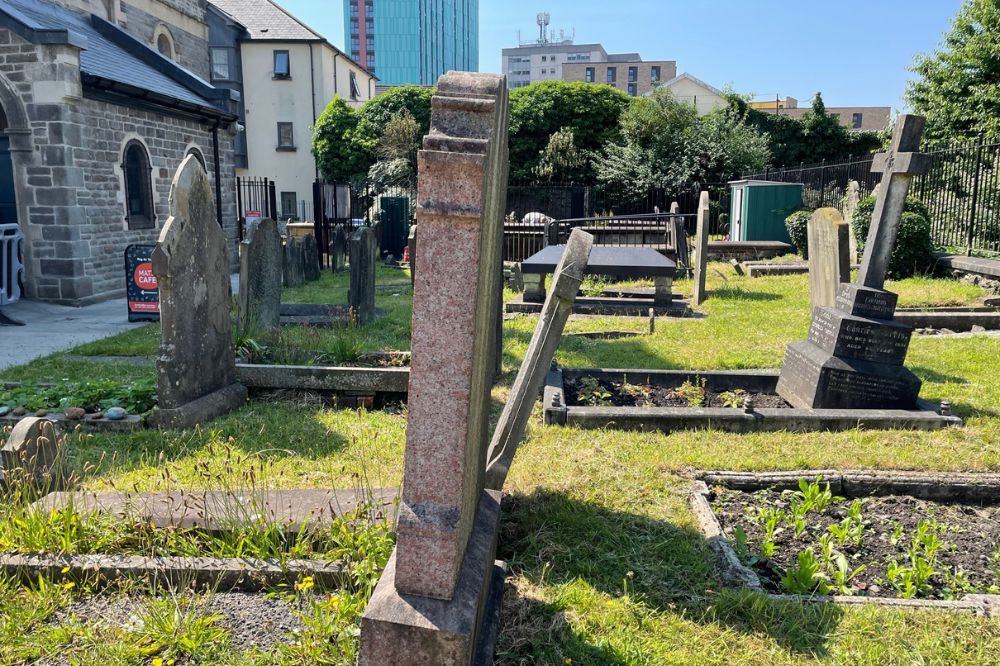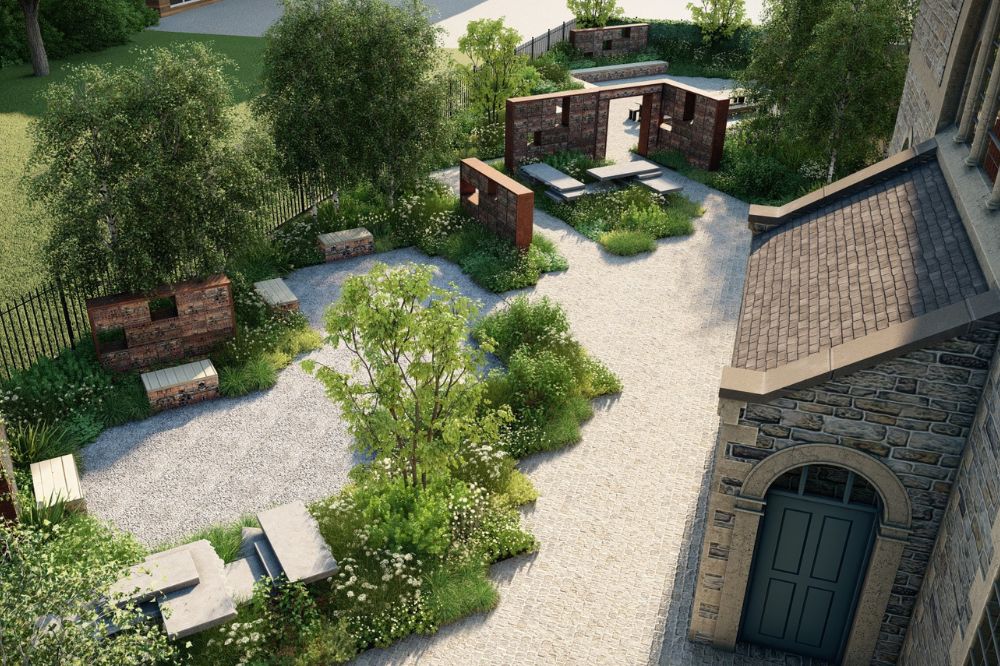Gravestones to be removed from former church and stacked as works of art

Richard Youle – Local democracy reporter
Gravestones at a former church are to be removed and stacked as works of art as part of plans to transform the outside area into a welcoming community garden.
The charity Matthew’s House, which helps people struggling with homelessness, mental health and addiction issues, has long wanted to make better use of St Matthew’s churchyard in Swansea where it is based.
Its plans, which have now been approved by Swansea Council, involve carefully removing gravestones and stacking them in sculpted forms throughout the new garden. Inscriptions of the names from all headstones held in the church records would be added to one of several “habitat walls” which aim to increase biodiversity.

Trail
There’ll be lots of new planting, plus seating areas. Small groups of people will be able to gather there, schools would be able to visit, and a heritage trail is be created with stories about the St Matthew’s Church site, off High Street, and its history. The new-look space is to be called Greenhill Gardens in reference to the area’s historical name.
Thom Lynch, project leader at Matthew’s House, which has occupied the former church for around eight years, said: “It always felt like the outside area was falling apart. Some headstones had fallen down, and we had some tripping accidents.
“We always had a dream of unlocking the heritage of the site. We want the garden to be pretty, and we’ve got a great landscape architect who has pulled the designs together.”
There are at least 225 gravestones, according to a planning decision report by council officers, and one corner of the churchyard will be kept to preserve the most significant of them.
Mr Lynch said the names of 600-plus deceased were in the church records and that all these names would be etched into the habitat wall. A heritage impact assessment submitted on behalf of Matthew’s House said significant effort had been made to contact the relatives of those laid to rest and that “support has been abundant” from people who responded.
Legacy
The heritage impact assessment said the stacking of gravestones into sculpted forms would preserve the legacy of those they commemorated in a “visually striking and respectful manner” and also be “meaningful works of art”.
It added that other options had been considered, such as placing the gravestones against boundary walls.
The planning officers’ report said all gravestones were to be taken up and repositioned other than those adjacent to the south-east gate where they would stay in place. It added that the principle of moving grave markers to create sculptural forms was acceptable to support the continued community use of the church and redefine the grounds as a contemporary urban garden.
There are several planning conditions, including no loudspeakers or recorded music in the garden, and access for conservation officers if historic features were uncovered during the work.
Matthew’s House is open three days a week and provides food, advice and laundry and shower facilities for 200 to 300 people per week. The proposal is for Greenhill Gardens to generally be unlocked and open 8am to 6pm seven days a week, and later on some evenings such as when Matt’s Community Choir practises on a Monday.
Mr Lynch said St Matthew’s Church was originally called St John’s Church, and that an area at the rear was formerly used as an overflow burial site for the city’s St Mary’s Church.
Support
He said the crypt of industrialist John Morris, whose name is synonymous with the Swansea community of Morriston, was at St Matthew’s Church although in an inaccessible area and that one of his descendants – the late Henry Dare – had been a big supporter of the Greenhill Gardens plan.
Matthew’s House is a charity and an initiative of The Hill Church, Swansea. It has six staff and nearly 130 volunteers, and relies on donations, fund-raising, and grants for building repairs and upgrades.
Mr Lynch said a lot of work was needed when the project took over the vacant building, which had previously been occupied by a different charity. “It was all overgrown, and there was still food inside the microwaves and fridges,” he said. “We got to work inside and out every weekend for six months.”
Support our Nation today
For the price of a cup of coffee a month you can help us create an independent, not-for-profit, national news service for the people of Wales, by the people of Wales.




